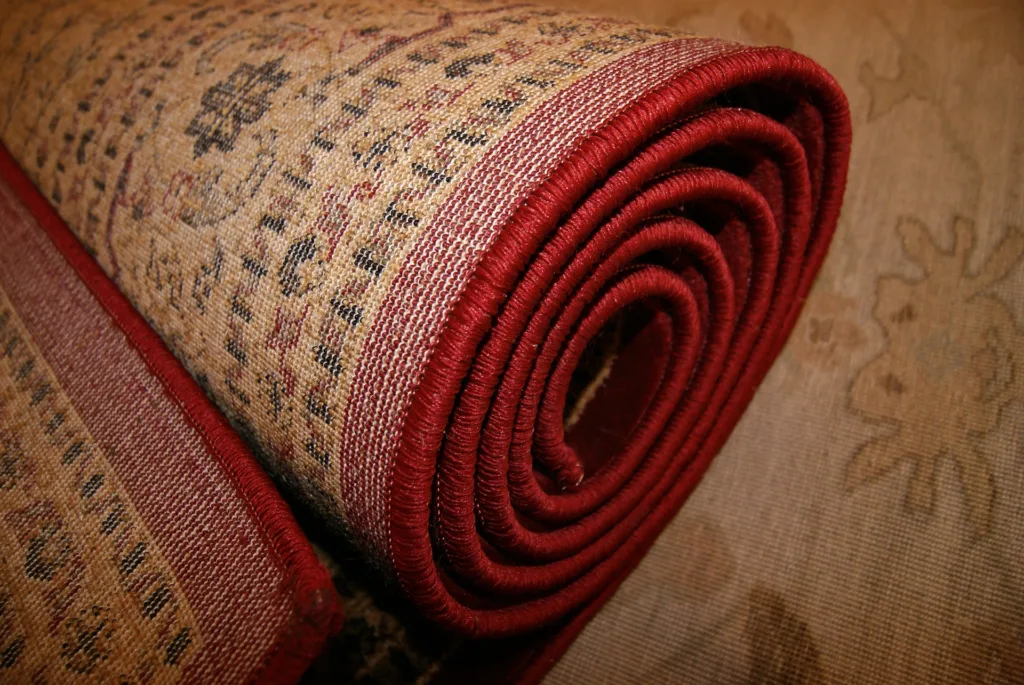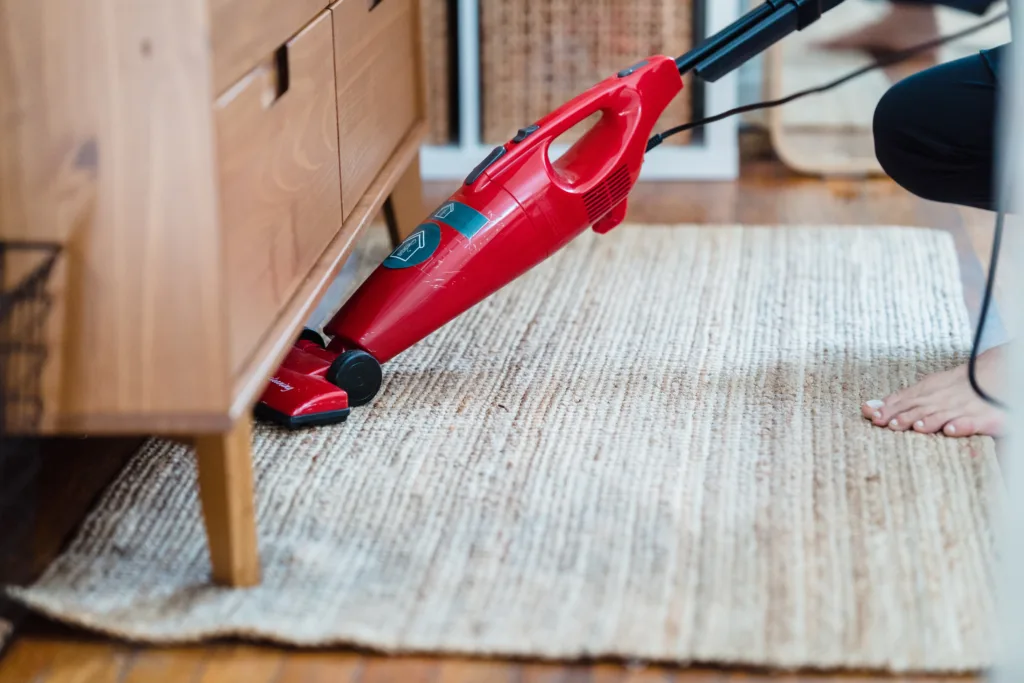1. Introduction
Properly storing rugs and carpets is essential to maintaining their quality and prolonging their lifespan. Whether you are moving, renovating, or temporarily storing your rugs, following the right storage techniques will ensure they remain clean, undamaged, and ready for use when needed. In this article, we will discuss step-by-step guidelines on how to store rugs and carpet with care.

2. Understanding the Importance of Storage
Storage plays a crucial role in preventing rugs and carpets from accumulating dirt, dust, and moisture, which can lead to mould growth and deterioration. Additionally, proper storage techniques help preserve their colour, texture, and shape. Neglecting the correct storage methods can result in permanent damage, such as creases, fading, and unpleasant odours.
3. Preparing the Rugs and Carpets
Before storing your rugs and carpets, it is important to prepare them properly. Start by thoroughly cleaning them to remove any dirt, stains, or odours. Vacuum the rugs to eliminate loose debris, and use suitable carpet cleaners for deep cleaning. Ensure that they are completely dry before proceeding to the storage phase.
4. Cleaning and Store Rugs and Carpets with Care

Cleaning your rugs and carpets before storage is vital to prevent dirt and stains from settling and causing long-term damage. If necessary, consider professional cleaning services to ensure a thorough and effective cleaning process. Adhere to specific cleaning instructions provided by the manufacturer to avoid using unsuitable cleaning products that might harm the fibres.
5. Rolling and Folding Techniques
When storing rugs and carpets, it is generally recommended to roll them instead of folding them. Rolling reduces the risk of permanent creases and allows for better utilization of storage space. In cases where the rug or carpet is too large, fold it gently in the direction of the pile, avoiding any sharp bends or excessive pressure on the backing.

6. Choosing the Right Storage Space
Selecting an appropriate storage space is crucial for protecting your rugs and carpets from environmental factors. Opt for a clean, dry, and well-ventilated area. Avoid storage spaces prone to extreme temperature fluctuations, excessive humidity, or direct sunlight. Basements, attics, and climate-controlled storage units are popular choices for rug and carpet storage.

7. Using Protective Covers
To shield your rugs and carpets from dust, dirt, and potential damage, utilize protective covers. However, it is essential to choose covers made of breathable materials such as cotton or linen to allow proper air circulation and prevent moisture buildup. Plastic covers should be avoided as they trap moisture and promote mould growth.

8. Storing Rugs and Carpets with Care in Humid Areas
If you reside in a humid region, extra precautions are necessary to prevent moisture-related issues. Consider using dehumidifiers or moisture-absorbing products within the storage space. Silica gel packets or moisture-absorbing crystals can help reduce humidity and safeguard your rugs and carpets.
9. Maintaining Temperature and Humidity
Maintaining stable temperature and humidity levels within the storage space is vital. Extreme temperature fluctuations and high humidity can cause damage to the fibres and promote mould growth. Use a hygrometer to monitor the humidity levels, and if necessary, employ humidifiers or dehumidifiers to maintain the environment within the recommended range. Generally, a temperature of around 65-75°F (18-24°C) and a humidity level of 40-55% are ideal for rug and carpet storage.
10. Checking and Rotating the Rugs
Regularly checking and rotating your stored rugs and carpets is crucial to prevent any long-term damage caused by pressure points or prolonged exposure to certain areas. Every few months, inspect the stored items for any signs of pests, mould, or moisture. Rotate them to ensure even wear and exposure to light.
11. Preventing Pests and Moths
Protecting your rugs and carpets from pests, especially moths is essential. These insects can cause significant damage by feeding on natural fibres. To prevent infestation, thoroughly clean the rugs before storage and ensure they are completely dry. Use mothballs, cedar chips, or lavender sachets as natural repellents. Avoid using mothballs directly in contact with the rugs or carpets, as they may leave behind unwanted odours.
12. Cleaning Before Reuse
When it’s time to retrieve your rugs and carpets from storage for reuse, make sure to clean them thoroughly before placing them back in your living space. Vacuum them to remove any dust or debris that may have settled during storage. Consider professional cleaning services for deep and effective cleaning, especially if they have been in storage for an extended period.

13. Conclusion
Properly storing rugs and carpets is crucial to maintain their quality and longevity. By following the guidelines outlined in this article, you can ensure that your rugs and carpets remain in excellent condition during storage. Remember to clean them thoroughly, choose an appropriate storage space, use breathable covers, and monitor temperature and humidity levels. Regularly check and rotate the stored items, and take precautions against pests and moths. With proper care, your rugs and carpets will be ready to enhance the beauty of your home whenever you need them.
14. Frequently Asked Questions (FAQs)
1. Can I store my rugs and carpets in plastic bags?
No, it’s best to avoid plastic bags as they can trap moisture and promote mould growth. Opt for breathable materials like cotton or linen covers instead.
2. How often should I check on my stored rugs and carpets?
It’s recommended to check on your stored rugs and carpets every few months to ensure there are no signs of pests, mould, or moisture.
3. Can I store my rugs and carpets in the basement?
Yes, you can store them in the basement as long as it is clean, dry, and well-ventilated. Monitor humidity levels and take necessary measures to prevent moisture-related issues.
4. Should I roll or fold my rugs for storage?
Rolling rugs are generally recommended to avoid permanent creases. However, if folding is necessary, do it gently in the direction of the pile to minimize stress on the fibres.
5. How long can I store my rugs and carpets without causing damage?
With proper storage techniques, rugs and carpets can be stored for several months or even years without significant damage. Regular inspections and maintenance are key to preserving their condition.


